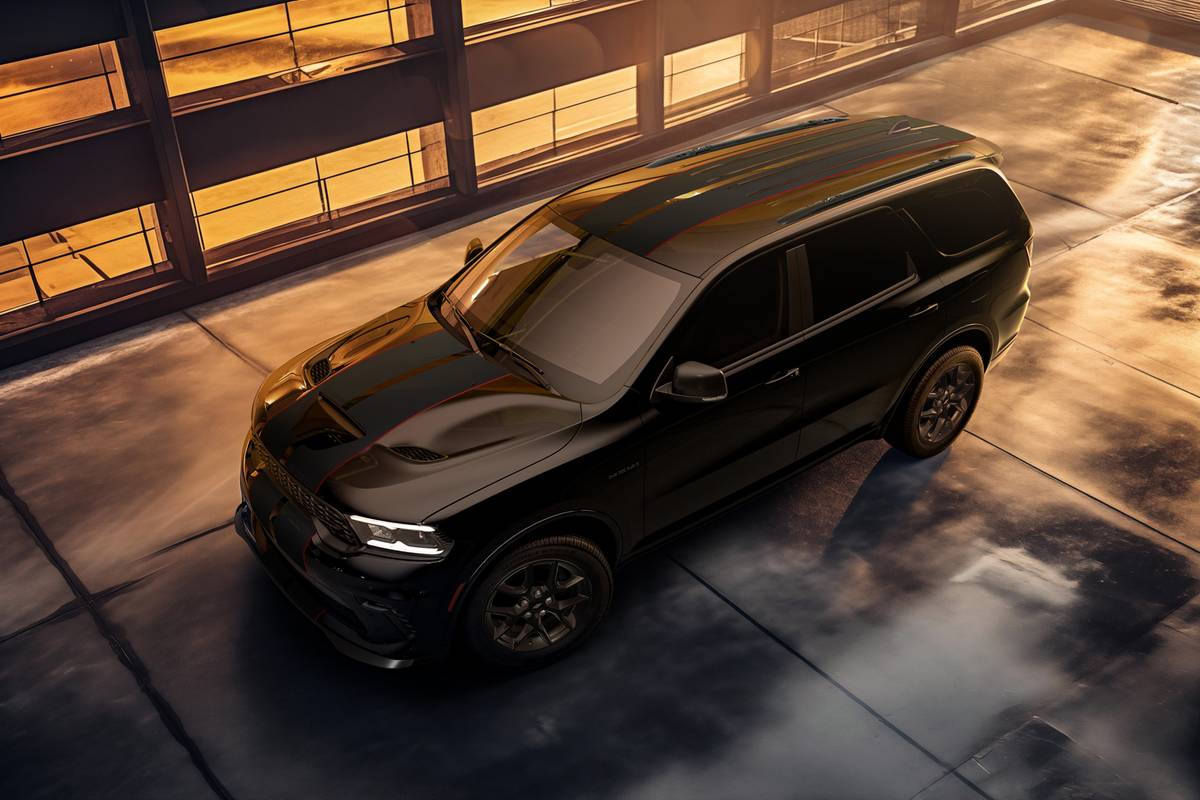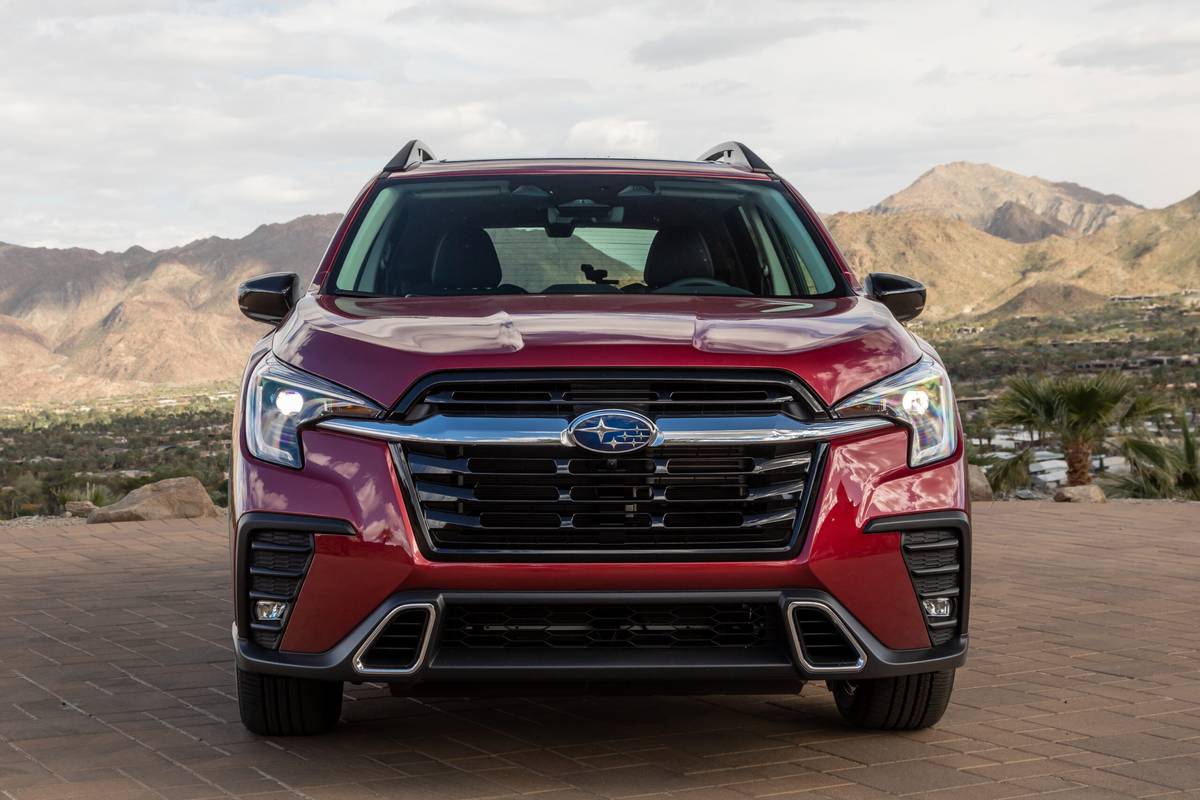chicagotribune.com's view
In creating the next generation CR-V compact sport-utility, Honda enlisted the help of consumers before giving engineers and stylists their marching orders.
By asking consumers what they wanted, Honda is rolling out a 2007 rendition of the CR-V without the faults that have plagued it since introduced in the 1997 model year.
For example, Honda originally thought it cute to place the gearshift lever near the top of the dash, where it stood out like the metal arm on a slot machine.
And there was the emergency brake lever stuck vertically in the dash awaiting a hearty pull rather than in its traditional spot alongside the driver’s seat.
And to ensure CR-V owner could protect their vehicles while parallel parking in tight spots, Honda affixed the spare tire to the rear door as a cushion. A door, however, takes far more space to open in a tight spot than a simple hatch lid.
Unusual touches? Sure. Popular? Not so much.
So for 2007, Honda has made a variety of changes to make the CR-V less a novelty act–and more user friendly.
The gearshift lever is now low in the center of the instrument panel below the radio controls; the hand brake lever is gone and instead the driver presses a pedal along the floor to set or release it; the spare is under the car; and the swing-out rear door is now a more manageable swing-up hatch lid.
There are more nice touches. The pull-up tray between the front seats to hold cups and cell phones has been replaced with a solid and stationary center console topped with cup and cell-phone holders.
The standard 16-inch radials have been replaced by 17-inchers that have a wider paw print for better handling. Vehicle height was lowered by one inch not only for easier step-in entry, but also to lower the center of gravity for lean-resistant handling in corners or less buffeting by semis on the interstate. And vehicle width was increased by 1.4 inches for a wider as well as lower profile to further improve handling while giving occupants more cabin stretch room.
Ride is most pleasant without any unnecessary harshness filtered into the cabin. The suspension was refined to better cushion the cabin from the road.
The 2.4-liter, 156-horsepower 4-cylinder offered with manual or automatic for ’06 has been refined and recalibrated to deliver 166 h.p.–teamed with only a 5-speed automatic.
It now claims 23 m.p.g. city/30 m.p.g. highway, or 1 more mile per gallon on the highway. However, considering CR-V is a compact and we tested the two-wheel-drive model and not the four-wheel-drive version, we’d expect higher city mileage. No, there’s no hybrid planned, nor are there plans to add an engine that will run on E85, either.
The 4WD is a real-time version that operates in front-wheel-drive until it detects slippage and then engages all four wheels on its own, the model of choice for the Snow Belt. It’s rated at 22/28.
We drove the 2006 CR-V to Detroit for the Honda 2007 model preview and drove the 2007 back.
While cranking out a few more horsepower, the 4-cylinder was probably the only feature in the 2007 that reminded us of the 2006. In stepping out to pass, you have to hit the pedal hard because it takes a split second for all the torque to respond.
In most cases, it meant waiting for the 18-wheelers to start chugging up those steep hills on Interstate 94 before venturing out to pass. But, then, there’s no CR-V Sport or turbo model so it was simply acting as intended, serving as a comfortable hauler of people and their things and not a contestant vying on the track.
CR-V also comes with a height adjustable dual-deck parcel shelf in the cargo hold to store items on top or underneath. And there are small cubby holes, bins and pockets throughout the cabin to store items.
The small shelf in front of the front seat passenger is gone, however. Nice place to put little things–until you made a quick turn or hit the brakes hard and the stuff went flying. Now you get dual glove boxes with lids instead.
While Ford came up with the idea for its minivans years ago, Honda has adopted a “conversation” mirror. A wide-angle mirror lowers out of the sunglasses holder in the roof so front-seat occupants can see the people in back while talking or keep an eye on the kids without having to twist and turn in their seats.
Not all the changes were for the better, either. In the previous model you could reach in through the cargo hold, pull a lever in the rear seat backs, and they’d fold for more storage. Pull a strap and the seats would flip forward for even more room. The new model replaces the levers in the seat backs with a strap on the seat top, which makes it a longer stretch to get at from the hatch.
And one change still needs to be made. The rather stiff rear-seat headrests jut out from the seats when in the down position and dig into your back like a rake. To ease the pain, you have to raise the headrests or recline the seat.
CR-V goes on sale Sept. 26. It will announce firm prices shortly before then. For now, there’s only an estimated starting range of about $21,000 for the based LX to about $26,000 for the top-of-the-line EX-L with 4WD. That’s up slightly from the $20,000 to $25,000 today.
The EX-L with 2WD tested will start at about $21,500. A voice-activated navigation system with a back up camera, a first for CR-V, will run about $2,000.
The list of standard equipment in the EX-L tested is impressive. In addition to the expected power windows/seats/locks, it includes anti-lock brakes; stability assist with traction control; side-curtain air bags; power moonroof; air conditioning; front/center/rear power plugs; leather seats; and an AM/FM radio with MP3 playback, six-disc in-dash CD player and six speakers.
Honda expects to sell about 160,000 CR-Vs annually, up from about 150,000 now. It also expects this compact segment to grow to 2.5 million in 2010 from 1.5 million units in 2005 as motorists move out of mid- and full-size SUVs into something more fuel efficient.
Now it needs to make the CR-V a little more fuel efficient to take advantage of that migration.
2007 Honda CR-V EX-L 2WD
Price as tested (estimated): $23,500*
Wheelbase: 103.1 inches
Length: 178 inches
Engine: 2.4-liter, 166-h.p. 4 cylinder
Transmission: 5-speed automatic
CITY 27 m.p.g.
HWY 32 m.p.g.
THE STICKER
$21,500 Base (estimated)
$2,000 Voice-activated navigation system (estimated)
*Add $595 for freight.
PLUSES
Redesigned and wider for more cabin and cargo room.
Problems fixed: Gear-shift lever moved off top of dash, power brake release moved off instrument panel, spare tire removed from rear door and highway mileage up 1 m.p.g. despite higher output 4.
4WD an available option.
MINUSES
City m.p.g. low for a compact 2WD.
No hybrid version.
Latest news



